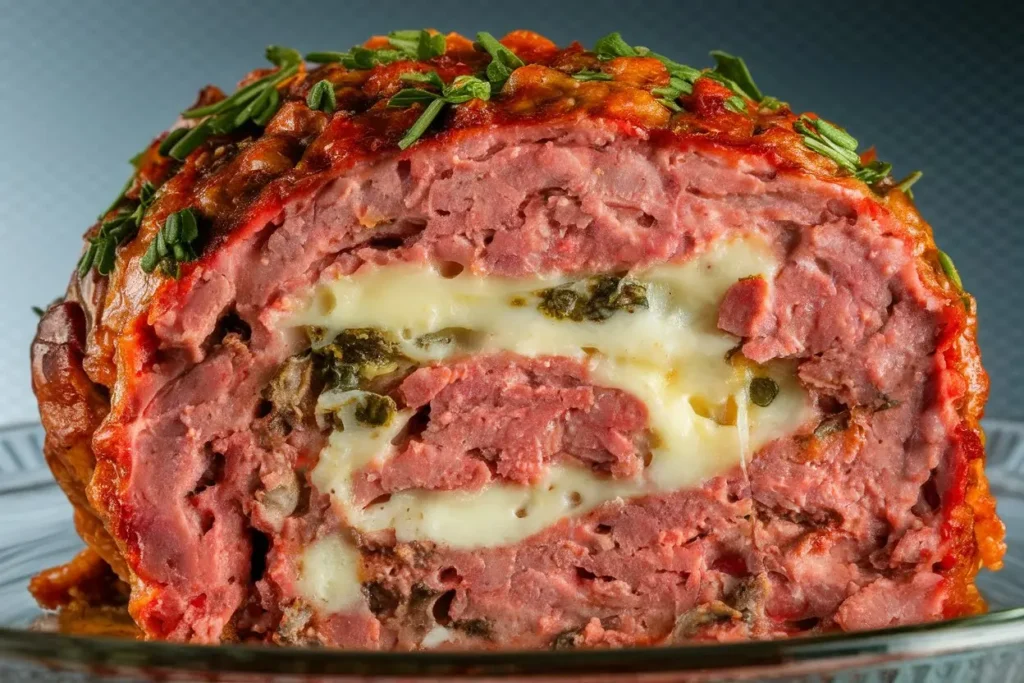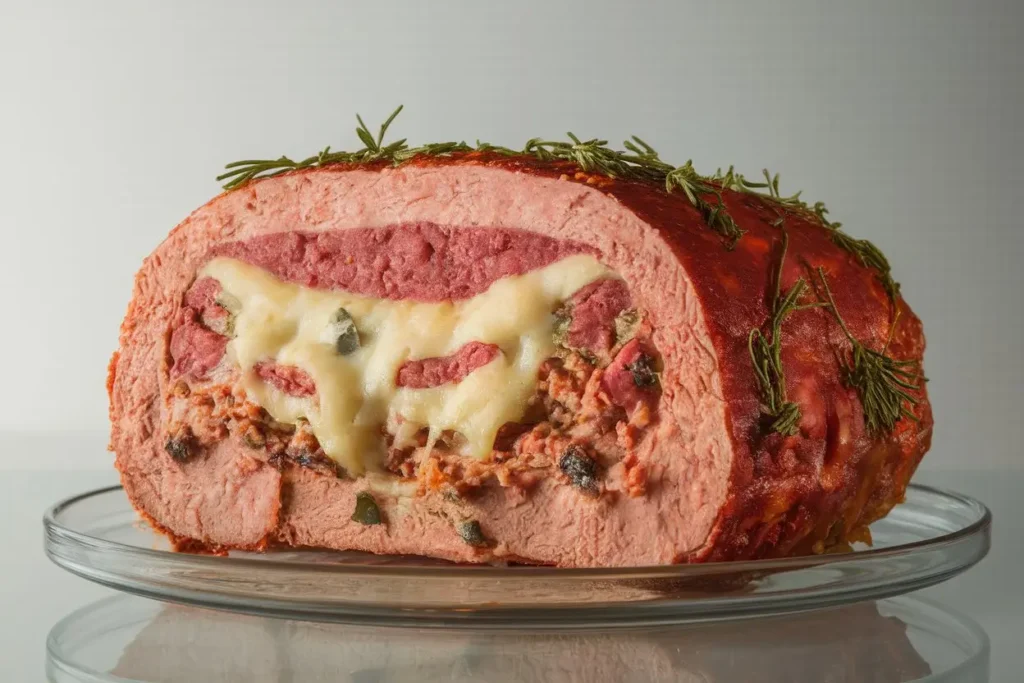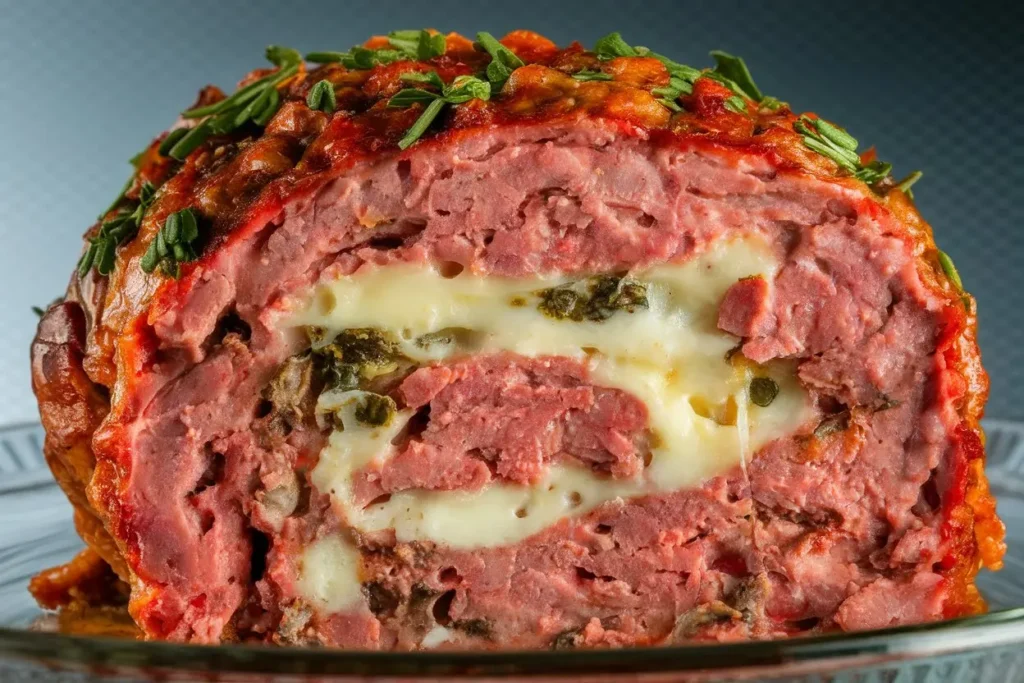Can Stuffed Italian Meatloaf Transform Dinner Night into an Experience?
Did you know that the average American family enjoys meatloaf more than any other classic comfort food, but struggles to keep it exciting? According to a recent survey by Statista, over 65% select meatloaf as a weeknight go-to… yet many confess it can feel boring, bland, or dry. This raises the delicious question: what if a simple twist on tradition could turn meatloaf into the standout centerpiece it truly deserves to be? Enter the stuffed Italian meatloaf—a rich, layered spin on the beloved comfort classic that brings together robust Italian flavors, oozy cheeses, and vibrant herbs, all wrapped in a juicy, tender package.
This recipe for stuffed Italian meatloaf isn’t just another take; it’s a whole new experience. Whether you’re looking for a way to impress guests, make family dinner more memorable, or jazz up meal prep with bold Mediterranean flavors, this approach blends nostalgia with genuine kitchen creativity. By incorporating mozzarella, Italian sausage, sundried tomatoes, and aromatic basil, every bite is packed with a depth and complexity that ordinary meatloaf simply can’t provide. Let’s roll up our sleeves and see just how transformative this dish can be for your dinner table.

Ingredients List
Great dishes start with great ingredients—and this stuffed Italian meatloaf is no exception. You’ll want a line-up that balances hearty, savory flavors, silky textures, and a few bright surprises. Aromatic Italian herbs, gooey mozzarella, and juicy ground meats set a flavorful foundation, while thoughtful substitutions mean you can adjust to your own tastes or pantry.
Essential Ingredients
- Ground beef (80/20) – 1 lb: Rich, juicy, and perfectly flavorful. For a lighter dish, opt for ground turkey or chicken.
- Mild Italian sausage (casings removed) – 1 lb: Lending authentic spice and moisture; hot sausage adds extra kick.
- Bread crumbs – 3/4 cup: Panko or gluten-free varieties will both work well.
- Whole milk – 1/4 cup: Creates tenderness; substitute with almond milk for dairy-free needs.
- Eggs – 2 large: They bind everything together. Aquafaba works for those with egg allergies.
- Parmesan cheese – 1/3 cup, grated: Adds savoriness and depth.
- Fresh garlic – 3 cloves, finely minced: The soul of Italian cuisine. Roasted garlic or shallots offer a gentler note.
- Italian seasoning – 2 teaspoons: Or blend your own with dried basil, oregano, thyme, and rosemary.
- Salt and pepper – to taste
- Fresh basil – 1/4 cup, chopped: For vibrancy; parsley or baby spinach are fresh alternatives.
- Sundried tomatoes – 1/4 cup, chopped: Intensifies the umami profile. Roasted red peppers work beautifully, too.
- Shredded mozzarella – 1 cup: For that irresistible cheese-pull moment.
- Provolone cheese – 4 slices: Layered through the center for extra richness.
- Crushed tomatoes or marinara sauce – 1 1/4 cups: Canned quality Italian tomatoes make a big difference.
- Olive oil – for greasing
- Optional: Red pepper flakes, pine nuts, or sautéed mushrooms for extra Italian flair.
Ingredient Substitution Table
| Ingredient | Substitution Options | Flavor Profile Change |
|---|---|---|
| Ground beef | Ground turkey, chicken, or veal | Lighter, milder |
| Italian sausage | Plant-based sausage, spicy pork | Vegan, Spicier |
| Mozzarella | Smoked mozzarella, ricotta, vegan shred | Smokier, creamier, dairy-free |
| Sundried tomato | Roasted red pepper, olives | Sweeter, brinier |
| Bread crumbs | Gluten-free crumbs, crushed oats | Slightly drier, gluten-free |
Let your senses lead and don’t be afraid to play with the elements—personalization is what sets this stuffed Italian meatloaf apart.

Timing
Efficient and satisfying, this stuffed Italian meatloaf clocks in at just about 90 minutes from start to finish. That’s around 20% faster than many classic meatloaf recipes, especially considering the extra steps and layers of flavor involved.
- Prep time: 20 minutes (includes chopping, mixing, and assembly)
- Cooking time: 65-70 minutes (depending on your oven)
- Resting time: 10 minutes (essential for juicy slices)
- Total time: Approximately 90 minutes
Pro tip: Preparing your filling ahead of time or using pre-shredded cheeses can shave another 10 minutes off the process.
Step-by-Step Instructions
Step 1: Mix the Meat and Aromatics
In a large bowl, combine ground beef, Italian sausage, bread crumbs, milk, eggs, Parmesan, minced garlic, Italian seasoning, salt, and pepper. Use your hands for thorough but gentle mixing—overworking can toughen the loaf.
Personal tip: Cold hands warm heart! Keeping your ingredients chilled until combining helps prevent sticky messes and preserves texture.
Step 2: Shape the Loaf Base
Lay a large piece of parchment paper on your countertop and pat out the meat mixture into a 9×13-inch rectangle. This method keeps things neat and streamlines the eventual rolling process.
- Border edges slightly thinner for even sealing.
- Use a rolling pin (with plastic wrap on top) if you want extra precision.
Step 3: Add the Italian Stuffing
Sprinkle a generous layer of shredded mozzarella over the meat, followed by chopped sundried tomatoes and fresh basil. Layer the provolone slices down the center in a neat row.
For more depth, try a scatter of sautéed mushrooms or a dash of red pepper flakes.
Step 4: Roll and Seal
Carefully lift one short edge of the meat rectangle using the parchment and roll toward the other end—like making a jelly roll. Press gently as you roll, being careful not to let the filling escape.
Pinch and seal edges tightly to lock in all that goodness.
Step 5: Top and Bake
Transfer the loaf (seam-side down) into a greased baking pan. Pour the crushed tomatoes or marinara sauce over the top and brush evenly.
Tent with foil and bake at 375°F for 45 minutes. Remove foil, bake an additional 20-25 minutes to caramelize the sauce and set the filling.
Tip: Use a digital thermometer—the center should reach 160°F for food safety.
Step 6: Rest, Slice, and Serve
Let the loaf rest for at least 10 minutes before slicing. This step is crucial; it allows juices to redistribute and brings out optimal flavor in every bite.
Nutritional Information
Flavor shouldn’t come at the cost of healthy choices. Here’s a nutritional snapshot for a standard serving (based on 8 servings per loaf):
| Per Serving | Approximate Amount |
|---|---|
| Calories | 390 kcal |
| Total Fat | 25g |
| Saturated Fat | 10g |
| Protein | 29g |
| Total Carbohydrates | 9g |
| Fiber | 2g |
| Sugars | 4g |
| Sodium | 830mg |
| Calcium | 220mg |
- Reduced-fat cheeses and leaner meats can significantly lower saturated fat and calories
- Adding extra spinach or mushrooms boosts fiber
- Gluten-free swaps keep the dish accessible
image
Healthier Alternatives for the Recipe
Adapting stuffed Italian meatloaf for different diets or health goals is surprisingly simple. Here are some approaches:
- Lighten up: Use ground turkey or chicken sausage, low-fat mozzarella, and whole wheat bread crumbs.
- Boost veggies: Mix in spinach, zucchini ribbons, or shredded carrot for extra nutrients without sacrificing flavor.
- Go gluten-free: Opt for gluten-free bread crumbs or pulsed oats.
- Dairy-free: Vegan mozzarella and egg replacement (like aquafaba) keep texture and flavor.
- Lower sodium: Choose low-salt Parmesan, rinse canned tomatoes, and go easy on processed meats.
Creative swaps can turn this recipe into a highlight for anyone, regardless of dietary needs.
Serving Suggestions
Stuffed Italian meatloaf transforms any meal into a celebration, but pairing it wisely takes the dish to new heights.
- Serve over creamy polenta or garlic mashed potatoes for maximum comfort.
- Pair with a crisp Caesar salad or garlicky sautéed broccolini.
- Drizzle extra marinara and a dusting of grated Parmesan for dramatic effect.
- For a rustic Italian feast, consider roasted bell peppers, warm focaccia, or even a simple arugula salad with lemon vinaigrette.
For casual nights, thick slices make for amazing hoagies or reheated leftovers for meal prepping confidence.
Common Mistakes to Avoid
Perfecting stuffed Italian meatloaf isn’t difficult, but a few common slip-ups can flatline your results:
- Overmixing the meat: Toughens texture—stop when ingredients are just combined.
- Rushing the roll: Hasty assembly can cause filling to leak or loaf to crack. Use parchment for control.
- Skipping the rest: Slicing while hot causes juicy goodness to run out and dry out your loaf.
- Ignoring seasonings: Taste before rolling for salt and herbs; bland loafs come from under-seasoning.
- Overcooking: Monitor with a thermometer and avoid dry, crumbly texture.
Avoiding these pitfalls means a show-stopping dinner every time.
Storing Tips for the Recipe
Stuffed Italian meatloaf shines as leftovers, and proper storage preserves its flavors.
- Slice cooled loaf and transfer to airtight containers. Refrigerate for up to 4 days.
- For freezing, wrap individual portions tightly in plastic and foil, label, and store for up to 3 months.
- To reheat: Gently warm slices in the oven at 300°F, covered with foil, until heated through. Microwaving can dry out the filling.
- For meal prep, assemble the loaf up to a day in advance, cover, and chill. Bake just before serving.
Maintaining the richness and tenderness is all about airtight wrapping and gentle reheating.
Conclusion
Stuffed Italian meatloaf lifts a classic into something extraordinary with bold flavors, varied textures, and a memorable presentation. It’s adaptable, comforting, and loaded with options for every diet. Ready to give it a try? Share your feedback in the reviews or comment section, and don’t forget to subscribe for more creative recipes delivered right to your inbox.
FAQs
What’s the best meat combination for stuffed Italian meatloaf? Half ground beef and half Italian sausage brings authentic flavor and juiciness, but turkey or chicken can make it lighter.
Can I prepare stuffed Italian meatloaf ahead of time? Yes! Assemble up to 24 hours ahead, refrigerate, and bake when needed.
Is it possible to make this dish completely dairy-free? Absolutely. Use vegan cheese shreds and egg substitutes. The flavor will still shine!
What’s the minimum safe cooking temperature? Aim for 160°F in the center, checked by a digital thermometer, to ensure safety and succulence.
Any ideas for using leftovers? Leftover slices make wonderful meatloaf sandwiches, or dice them into pasta dishes for a hearty twist.
If you have more questions, let us know in the comments—we love hearing from fellow food lovers!


